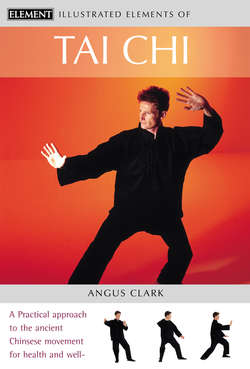Читать книгу Tai Chi: A practical approach to the ancient Chinese movement for health and well-being - Angus Clark - Страница 16
ОглавлениеBody Shape and Posture
THE QUALITIES OF stability and mobility work with perfect synchronicity in the tai chi postures, which combine correct body shape with freedom of movement. The result is a solid strength and flexibility. Tai chi is a holistic practice, so all parts of the body – hips and heels, pelvis and spine, shoulders and hands – work as one.
THE BASIC STANCE
Although every tai chi posture is carried out while standing, the characteristic stance is rather like standing and sitting at the same time. By techniques such as keeping the feet firmly planted on the ground, keeping the knees flexible and never locking them, and dropping the spine, you sit yourself into a stance, and maintain this basic posture while moving. This illustration analyzes the basic tai chi stance, and the guidelines given apply to all the postures. Practice the stance as a static posture often, until you are confident enough to be able to adopt it without practice.
ALIGNING THE HANDS
The following exercise demonstrates the difference between aligning the hands with the forearms and letting them hang down from the wrists.
1 Stand with your arms lifted to chest level and the palms of your hands facing you with the fingertips spread about 2 inches apart from each other. Let your elbows hang close to your sides and your wrists go limp so that your hands drop. Imagine your arms and hands are enclosing something large and cylindrical against your chest.
2 Now lift your hands until they are in line with your forearms. The cylindrical shape begins to fly off.
3 Lift your elbows up and out to the front to bring the shape back without letting your hands flop forward. This time the shape enclosed by your arms is defined by your elbows, shoulders, and spine and not just your arms and hands, so it is defined more strongly. Letting the hands drop isolates them from the rest of the body.
ALIGNING KNEE AND FOOT
In Lifting Hands the rear knee and foot are in perfect alignment when the weight is back. When the weight is forward, as in Shoulder Stroke or Brush Knee and Push, the bent knee should be no farther forward than the toes.
